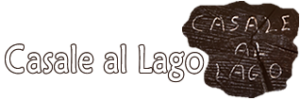TODI – The town is World wide famous mainly for the kind of stone which is made of and also because it gave birth to the poet Iacopone da Todi. Visiting Todi also gives you a chance to taste its typical food and products. Its historical downtown is very pretty, starting from the Santuario della Consolazione through the San Donato church, until the great Piazza del Popolo. A visit to this town is of great interest for the beauty of its monuments and its Medieval center. The nature surrounding the historic downtown is rich, full of great landscapes and panoramic view. In ten minutes from Todi you can easily reach the Tiber Park and the Corbara Lake (dam over the Tiber river).
ORVIETO – The famous rock of Orvieto is just the basis of a city where everything is about art and history. Ages come across the town starting from the Etruscan civilization, through the Middle Age, until today. Since then, time has not been able to damage the wild beauty of the red volcanic rock plateau (which Orvieto is made of) but it testifies about its supreme art and beauty. Putting together the famous Duomo, Saint Patrick’s Well, Moro Clock Tower and many other artistic treasures, you easily get a unique glance over the Orvieto masterpiece.
Around Orvieto, in any of its areas, both Tuscany and Lazio directions, you can reach many historical attractions, such as the Crocifisso del Tufo Etruscan Necropolis, the Roman ruins over the Tiber (Pagliano’s Roman harbor)
TERNI – Marmore Water Falls – Once you get to Terni, keep going on towards Valnerina. Suddenly, only after 7 km, you will find on your right side the impressive and amazing Marmore Water Falls, the highest falls in Europe, 165 mt high. This fall was artificially created by the Romans, to supply their water needs. Terni is a dynamic city, one of the most modern ones in Umbria, anyway beside its industrial fame, it is also rich of monuments and interesting archaeological areas. In fact not far from the city, there are two different but great attractions: one is the famous archaeological site of Carsulae, while in the near town of Avigliano Umbro, you can enjoy a restful excursion in the prehistoric Dunarobba Forest. The city itself offers a nice historic downtown, and just out of the city, there is the famous San Valentino Cathedral.
PERUGIA – Perugia is the main Umbrian city, made of its five districts enclosed by original twenty-two Centuries old Etruscan walls. The most important monuments and spots in Perugia are: Palazzo dei Priori, the Cathedral, Fontana Maggiore. All these monuments can be found in the same place: Piazza Grande. Walking down the beautiful Corso Vannucci, there are several locations to see, such as the Belvedere Garden, the Rocca Paolina and the Umbrian Art Gallery. While eating some excellent Perugia chocolate, be ready to walk up and down the hill because stairs are another distinctive feature who makes Perugia famous!
ASSISI – Laying on a Mount Subasio side, everything in this small town talks about Saint Francesco. The stunning Basilica, also famous for its Giotto’s frescoes, is located at the top of a charming hill, facing the whole Perugia valley. Just outside the center of the town you can find interesting roman ruins to visit. A gentle quiet atmosphere reigns in this town, which was an Umbrian town then conquered by the Romans and afterwards devastated during the Barbarian invasions. Later it became a free city-state and during the Renaissance Assisi was ruled by many lords before becoming part of the Pope state. Besides the basilica, there are several interesting churches: S.Rufino, S.Damiano and S.Chiara.
SPOLETO – This town represents a typical mix of many different ages and events. Previously rebuilt by the Romans, it still keeps its old Medieval aspect. Spoleto was a rich Longobard area, then an important town of the Pope State The Rocca Albornoziana and the Roman ruins must be seen ! Since a long time, Spoleto has been the set for an important cultural event, called “Festival dei Due Mondi”. Other important monuments that are worth a visit are the Cathedral of S.Maria Assunta, S.Pietro church and the Roman theater dated First Century A.D. Today it is totally restored so that its original structure and shape are still visible.

